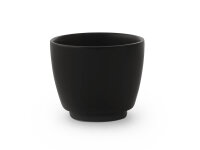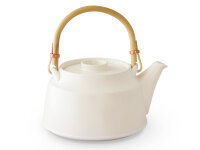
Japanese Teaware
Japanese Teaware - Kyusu and Teacups
In the history of Japanese tea ceramics, art and craftsmanship combine in an exemplary way. The preparation of tea has evolved into the famous tea ceremony with its unique philosophy and aesthetics, significantly influencing the manufacturing techniques of artisans. Craftsmanship perfection, Japan's special clay deposits, and porcelain production developed to the highest level in the 17th century are responsible for making Japanese teaware something truly special. Kyusu is the traditional Japanese teapot used for brewing green tea. The most well-known form is the yokode kyusu with a side handle. But other teapots with different shapes also serve admirably, such as our original Japanese teapot made of glazed stoneware.
Tea and Japan - Enjoyment, Inspiration, and Meditation
Researchers disagree on whether the first tea came to Japan from China or whether "Sancha," the mountain tea, already grew wild in Japan's mountain regions and was consumed as tea before this event. What is a fact is that Japan is one of the most traditional tea countries in the world. In hardly any other country has the preparation and tasting of tea been celebrated and maintained as extensively as in Japan. Japanese tea ware is an integral part of the tea ceremony and a must-have for every tea lover.
Tea Ware at Oryoki - Design and Function
In Oryoki's range, you will find various tea ware online - modern, traditional, always of high quality. The Japanese tea set, consisting of a Kyusu and tea bowls, is ideal for enjoying green tea. The teapot has an integrated strainer and is mostly made of red Tokoname clay, which is ideal for enhancing the tea's flavors. Depending on the tea set, the Kyusu is very small by our Western standards, holding between 260 ml and 360 ml. Therefore, it appears more like a teapot. However, green tea from the original Japanese teapot is always completely poured into the tea bowls and then freshly brewed with water from a cast-iron tea kettle. With high-quality teas, this process can be repeated up to five times.













